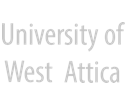Application of different methods for the extraction of yeast β-glucan
Abstract
β-D-glucan is a D-glucose biopolymer. The cell wall of yeast contains β-D- glucans. β-Glucan has been isolated from barley, oat, mushrooms, algae bacteria and yeasts. Spent
brewer’s yeast has been widely used for β-glucan production but yeast waste biomass from wine industry has not been yet utilized. Yeast β-glucan can be incorporated in various functional food, beverage and pharmaceutical products. In recent years, there is an increasing interest arrived from the food and pharmaceutical research community due to its proven immunostimulating role in human and animal health. For the production and purification of yeast β-glucan various technologies have been proposed and new techniques are constantly investigated. The aim of our research was the study of three different methods and technologies for the extraction and purification of β-Dglucans from Vin 13, a S.cerevisiae strain used widely for wine production. The max. concentration (64.56 ± 1.25 %) of β-glucan in the final yeast powder was achieved with the extraction Method 3 in only two steps process and more precisely with 10% (w/v) yeast cell rehydration, 24 h yeast autolysis and 0.5 M hot NaOH. The demonstrated method is easy, fast and low cost for yeast β-glucan production in industrial scale.
Keywords
DOI: 10.26265/e-jst.v11i1.3091
Refbacks
- There are currently no refbacks.






